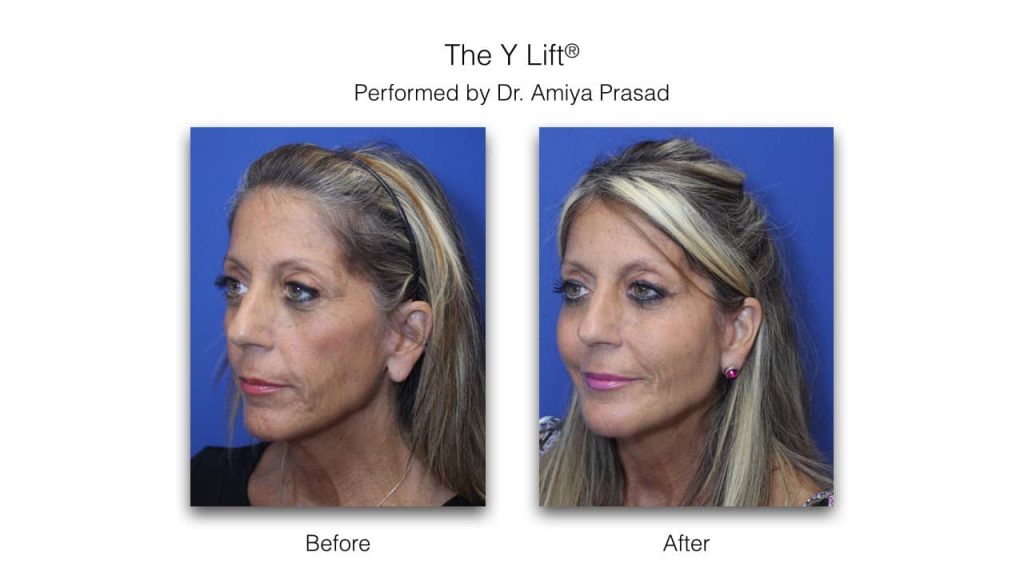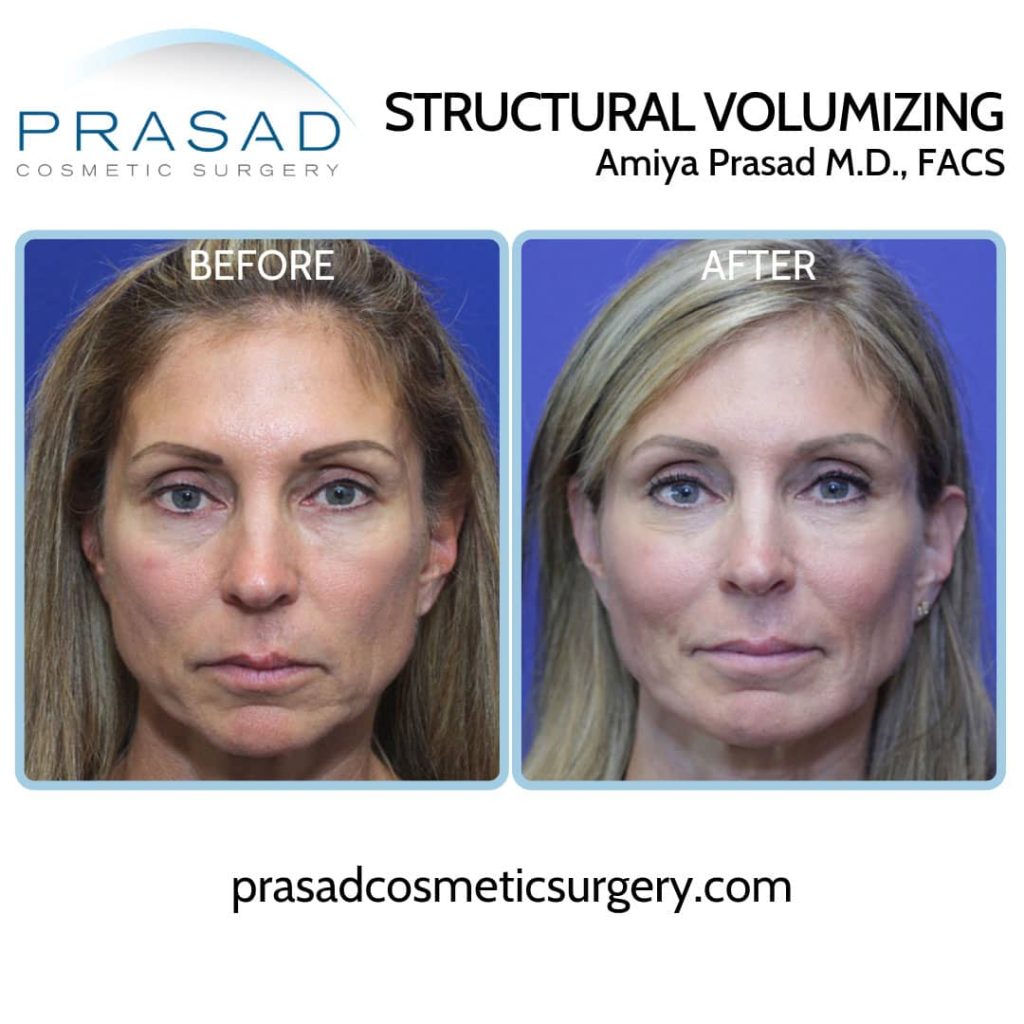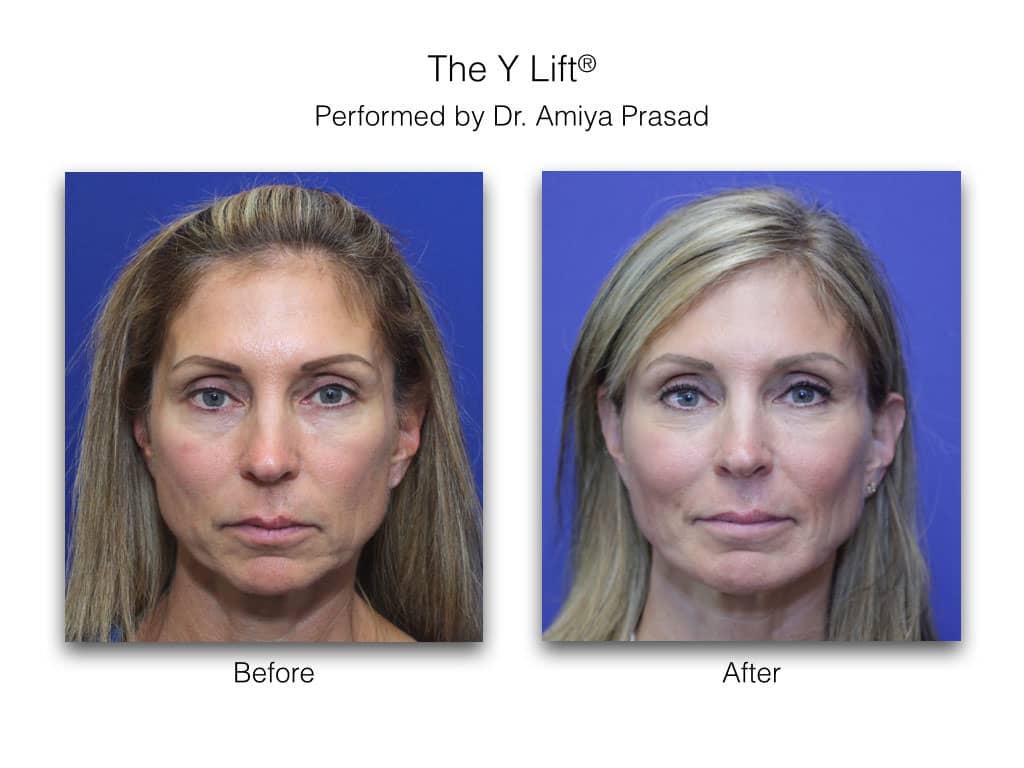How To Get Rid Of Pillow Face From Fillers
Facial volume loss is one of the get-go significant signs of aging. Every bit we age, the appearance of a full and defined face becomes more flat or sunken. Facial volume loss due to aging is caused by loss of bone, musculus, fat, and soft tissue. The awarding of cosmetic filler is a pop treatment to restore facial volume, only many people detect themselves looking soft and pillowy after this type of procedure. I'll discuss different aspects of adding facial volume, and how that pillowy await tin be avoided.
People come in periodically after a facial dermal filler procedure performed elsewhere complaining about looking soft like a pillow, or looking mashy. The volume augmentation does not look house, and often have some random dimpling in the cheeks. They end up looking bloated like "chipmunk cheeks" rather than defined and youthful.

What Causes "Pillow Face"?
What causes volume augmentation to result in a pillowy await? Most doctors place cosmetic fillers just below the surface of the skin, or in the fat or soft tissue layer. Fillers commonly placed in the fatty and soft tissue space underneath the dermis rely on the overlying skin to hold them in place. This infinite has limited power to maintain the shape of a filler, even when precisely placed.
In the office, it can look good initially, only the filler migrates, and creates a doughy expect. Some doctors actually intentionally place larger amounts of filler to balloon the skin to fill up the potential space in such a way that the cheeks end upward looking large and disproportionate. From my perspective, this exaggerated and unnatural appearance makes rational people afraid to consider cheek volume enhancement, in many means comparable to the fear of having duck lips like some well-known people in the media.
Many doctors who perform these procedures are not surgeons with any experience working at the level of the bone structure. Early in my career, I worked as a segmentation chief of oculoplastic surgery at a level one trauma heart, and performed surgical reconstruction for facial trauma and tumors routinely.
In addition, in my corrective exercise, I've routinely performed facial implants, which need to be placed directly on the bone. When information technology comes to facial rejuvenation, what is overlooked past many doctors particularly dermatologists is where near of the volume loss from aging is occurring – at the bone level. A few millimeters of bone loss corresponds with a significant loss of volume. However, filler placement is routinely placed merely under the pare, which reflects an outside-to-in approach.
How Dr. Prasad Avoids a Pillow Face
I approach facial rejuvenation from an inside-out approach. By applying my cognition and experience as a cosmetic and reconstructive surgeon, I place specific fillers at the os level with minimal trauma to create a more than structured, and youthful appearance. Substantially, applying the principles used in facial implant surgery to the placement of resilient and long lasting hyaluronic acid fillers at the bone level, ordinarily with minimal to no bruising.


Ofttimes, I detect the results to be superior to what would have been achieved on the same individual if they were to take a facelift. The facial fatty and soft tissue layers lay over the foundational volume, looking contoured, natural, and soft to the touch.
How to Become Rid of Pillow Face from Fillers?
I routinely let my patients know in consultation that if you've had facial filler done, and you are unhappy with the effect, as long as the textile is a hyaluronic acid filler such equally from the Restylane or Juvederm families of fillers, the results tin can be reversed with the injectable enzyme hyaluronidase. Afterward dissolving, I can place the facial fillers deeper in the anatomy for a more divers result.
Patients can look pretty expert right afterward the procedure, which merely takes minutes for the full face, including the mentum, jawline, and cheeks. I normally run across patients about 2 weeks after the process for follow-upwards to run into if any farther enhancement is needed. Information technology's better to add filler later on if needed, than to add also much in the initial treatment, and then having to dissolve information technology.


Conclusion:
If your face looks like a pillow after undergoing filler placement, you notwithstanding tin can reach a natural look with Structural Volumizing at the bone level. Many times, people arraign the filler for their event. It'south important to see filler as a material, just as clay is to a sculptor – it is the sculptor that determines how the sculpture looks, not the clay. Every bit I stated earlier, I often start with patients who take a pillowy look from their previous procedure by dissolving the filler, and starting over with the Structural Volumizing technique to achieve a more structured, contoured, and natural-looking consequence.
- Dr. Prasad'southward Weblog
Date Request
Source: https://prasadcosmeticsurgery.com/what-causes-pillow-face-from-fillers-and-how-to-avoid-it/

0 Response to "How To Get Rid Of Pillow Face From Fillers"
Post a Comment